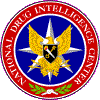
|
National
Drug Intelligence Center Philadelphia/Camden High Intensity Drug Trafficking Area Drug Market Analysis June 2007 TransportationThe PC HIDTA region's highly developed transportation infrastructure is often exploited by DTOs to ship large quantities of drugs into, through, and from the region. Most illicit drugs available in the HIDTA region are transported from New York City along I-95; traffickers also use this route to transport illicit drugs through the region to markets in eastern Pennsylvania (Allentown, Harrisburg, Lancaster, Reading, and York) as well as Delaware, southern New Jersey, and the eastern shore of Maryland. Illicit drugs are also transported into the region along I-95 from Miami and Atlanta. Moreover, Interstates 76 and 276 (east-west) and I-476 (north-south) serve as significant drug transportation routes to and from the HIDTA region. Law enforcement reporting suggests that DTOs more commonly are using indirect routes, such as state routes and secondary roads, to transport drugs to the area in an effort to avoid law enforcement interdiction. When transporting illicit drugs overland into the HIDTA region, traffickers commonly use private and commercial vehicles with hidden compartments. Mexican DTOs typically use crude methods of concealment in vehicles, including hidden compartments in oil pans, car manifolds, brake drums, drive shafts, radiators, and gas tanks. Dominican DTOs often construct sophisticated false compartments that are electronically operated. A variety of other methods are used by traffickers to transport drugs into and throughout the HIDTA region; many traffickers use multiple methods to avoid detection and increase the likelihood of successful delivery. Philadelphia has an extensive intercity and regional passenger rail system that is often exploited by traffickers; the system provides numerous scheduled daily departures from Philadelphia's 30th Street Station to Baltimore, Maryland; New York City; and Washington, D.C., as well as return trips. Newark and Trenton-based street gangs in New Jersey routinely use commuter rail services to transport cocaine, currency, and members to Camden. This Trenton-to-Camden commuter rail service is sometimes described as the "crack line," according to law enforcement. Drug traffickers sometimes use the Philadelphia International Airport to smuggle drugs into the HIDTA region. The airport is attractive to transporters because of its direct connection to many foreign and domestic locations, its high volume of travelers and cargo, and its proximity to major highways and interstates, including I-95. Some traffickers use numerous couriers on flights with several connections in a "relay" style, in which one courier hands off the package to another at a midway stop. The consolidated Port of Philadelphia--which consists of the waterfront area of Philadelphia, Camden, and Wilmington, Delaware--is one of the busiest ports on the Atlantic Coast and enables traffickers to capitalize on the volume of goods passing through the port to smuggle illicit drugs into the PC HIDTA region. Cargo unloaded at the port is stored in one of the many private warehouses located nearby or is transported to destinations throughout the United States and Canada in commercial trucks or on one of the three major railroads that serve the port. Vessels arrive in the port from numerous foreign countries, including high-risk drug source and transit countries such as Colombia, the Dominican Republic, Jamaica, and Venezuela. In addition, many cruise ships travel between Philadelphia and various Caribbean island nations, many of which are drug transit countries. Passengers, crew members, and stevedores on cruise ships have reportedly smuggled illicit drugs into the PC HIDTA region from these locations. Package delivery services are being used more often by drug traffickers in the region. Many drug traffickers prefer to use package delivery services because they can monitor the shipments on the Internet. If a shipment is delayed, they assume law enforcement has intercepted the parcel, and they refuse delivery to avoid arrest. Drug traffickers use a variety of techniques to conceal drugs shipped in parcels, such as concealing them in book bindings, ceramic statues, candles, and other items. Traffickers also ship drugs, such as cocaine, in flat, commercial "letter envelopes," in an attempt to elude law enforcement or package handlers who are adept at discovering contraband shipped in larger boxes. |